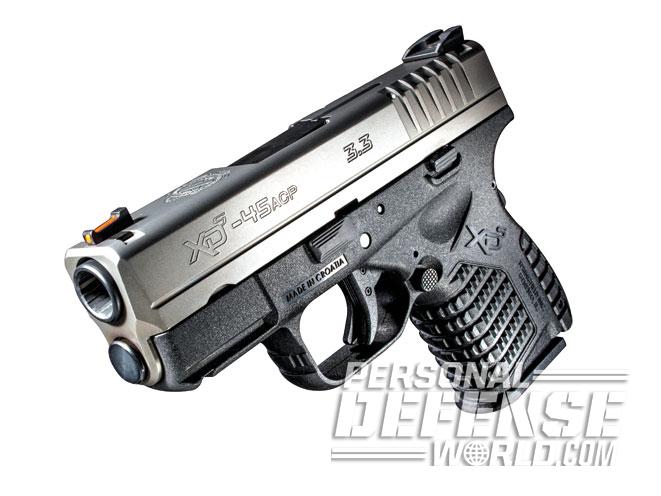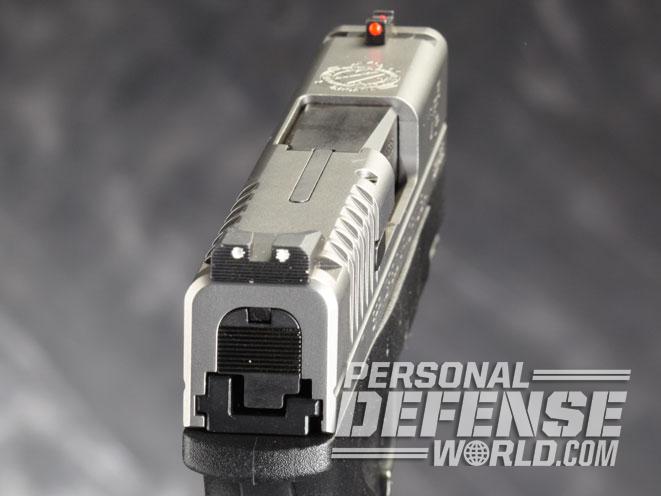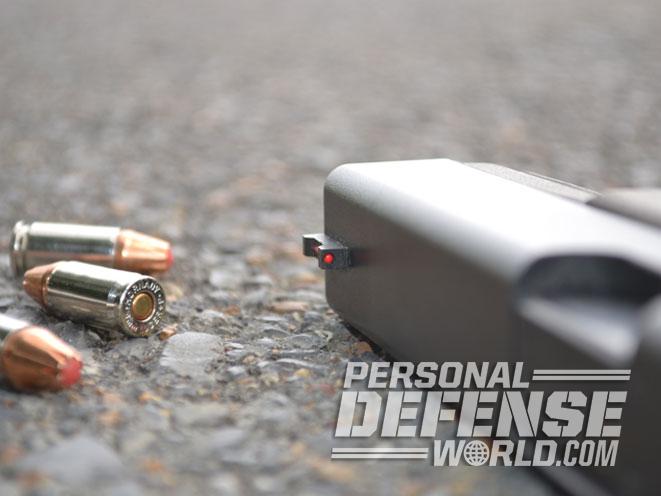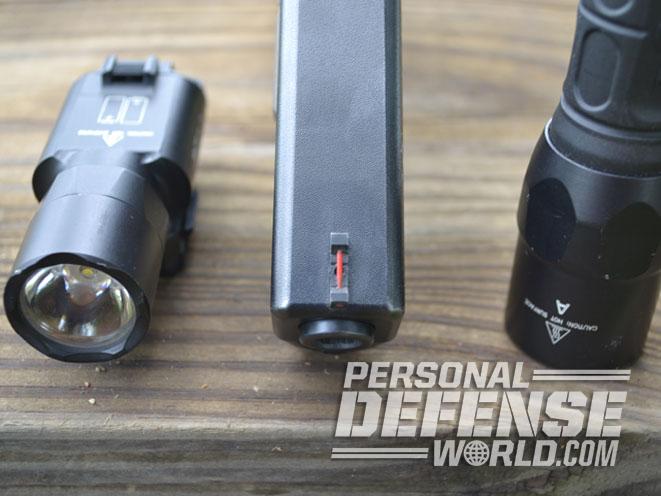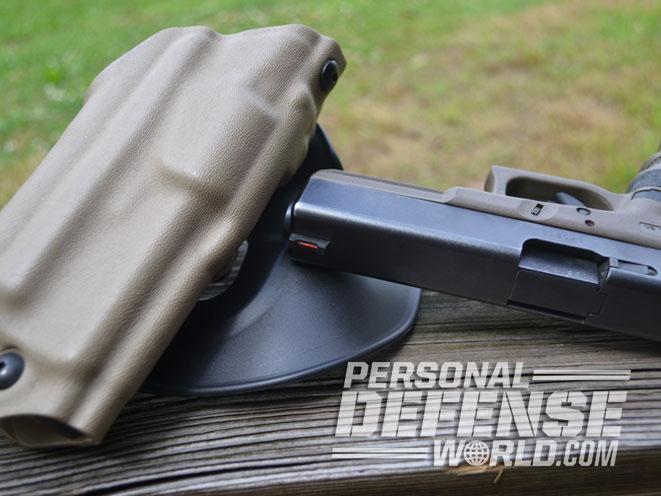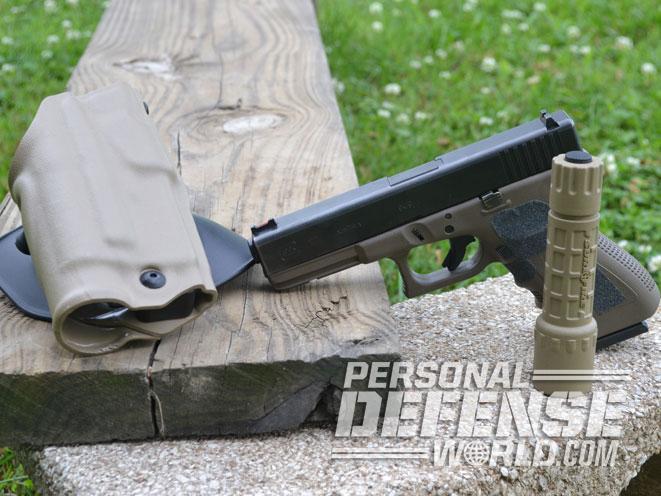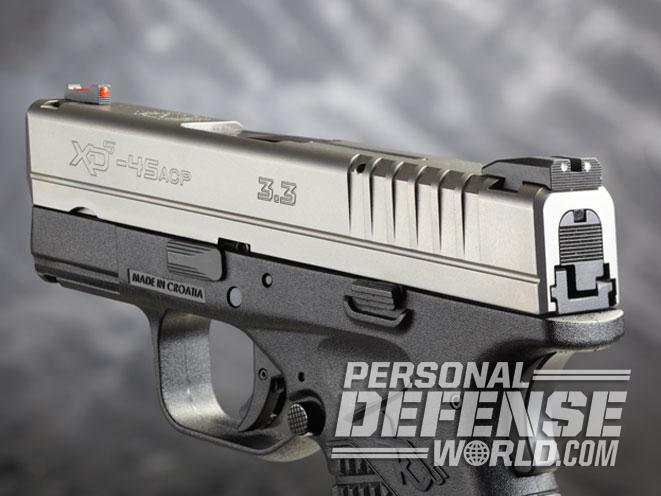For many years there has been quite the debate over which sights are best for concealed-carry purposes. From this debate, some great innovations have surfaced. We are fortunate to have a wide array of innovative sights these days. Some persistent myths, however, have been perpetuated regarding sighting choices for modern semi-automatic handguns used for self-defense.
Fiber-optic sights have been around a day or two, and they are still held in high regard within the shooting sports as the preferred front sight for many of the shooting disciplines. Just about everyone in the winner’s circle has some form of a fiber-optic front sight. For many years the tactical community has been resistant to use fiber-optic sights, claiming they are too fragile. This myth, and many others, have subsequently drifted down into the carry community. In fact, we seem to be cheating ourselves of some very real advantages by not choosing a fiber-optic front sight for our guns.
The obvious reason in the competition world that the fiber optic is so popular is the fact that it gathers light and makes the front sight easier to pick up. When we apply low-light/no-light techniques to the fiber optic, it actually works pretty well under most conditions. Even with night sights, gold beads or other front sight choices, you still have to have enough light to identify your target. If you have enough light to identify your target, the fiber optic will work pretty darn well. The key to success is proper installation and replacing the rod when needed.
Advertisement — Continue Reading Below
Sturdy Mounting
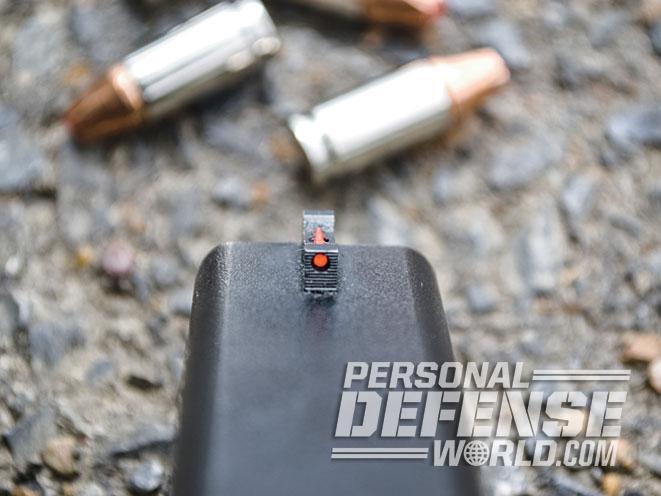
The first myth that is continually perpetuated is that fiber-optic sights are “too fragile” for carry use. I believe part of this myth surrounds improper installation of the fiber-optic rod. The installation method is the key to whether or not the sight will last. When you install the rod in the base, you should heat the end you look at first, and then pull the rod back into the sight base. After doing that, trim the rod on the muzzle end and heat it properly. If you follow those proper steps, the rod will most likely not fall out. Fiber-optic rods will last thousands of rounds and many times in and out of the holster when properly installed.
RELATED STORY: 11 Next-Gen Sights to Maximize Your Gun’s Performance
Advertisement — Continue Reading Below
What do we do if the fiber-optic rod does fall out at the exact time that we need the pistol to save our life? There is still enough of the front sight base there to align and break the shot. If you are using a flashlight to illuminate your target in close quarters, that illumination will show through where the rod is supposed to go. Problem solved!
Another key to making the front sight last for thousands of rounds and many repetitions in and out of the holster is your choice of cleaning solution. There are several quality options among the “greener” cleaning supplies that are less harsh to the fiber-optic sights than in years gone by. By shopping around and doing a bit of research, we can find a number of cleaners/lubricants that work well but will help maintain our fiber-optic sights for years to come. If you do use a harsher cleaner, just change out your fiber-optic rod when it starts to turn colors or appears to shrink a bit in size.
Low-Light Tactics
Advertisement — Continue Reading Below
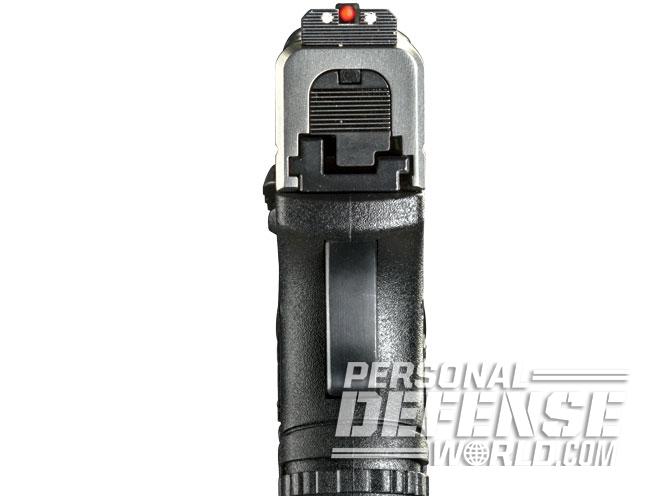
Another myth seems to surround low-light use with the fiber-optic front sight. It is true that it won’t glow in the dark like a tritium sight. I submit that the fiber-optic sight is not a drawback in this case, but it doesn’t really shine as a sighting system, either. Most of the other low-light conditions will require the use of a handheld flashlight or a weapon-mounted light to identify the target. This proper use of a handheld light, and to some degree a weapon-mounted light, is very advantageous and gives the shooter almost daylight-type conditions in which to shoot their pistol. The shooter only needs to practice with the appropriate handheld light he or she would normally carry. They should also find the flashlight technique that provides them with the best speed and accuracy. I’ve personally noticed on some targets that a SureFire X300 Ultra weapon-mounted light will illuminate the fiber optic sufficiently without the aid of a handheld light.
RELATED STORY: 11 Back Up Iron Sights That Keep You in the Fight
Advertisement — Continue Reading Below
Trouble-Free Shooting
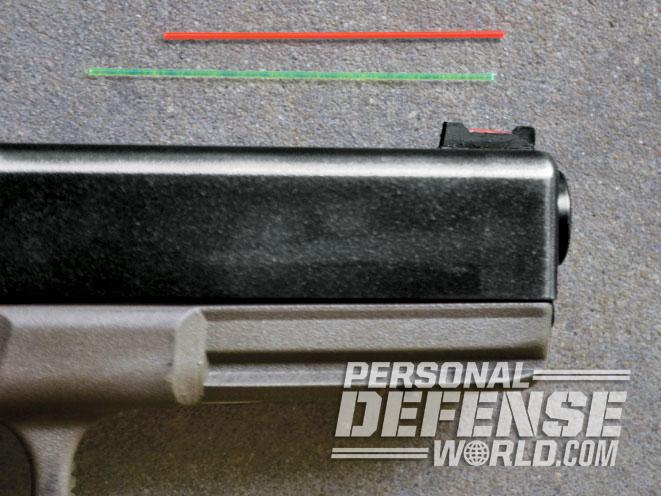
The fiber-optic front sight is a viable tool for concealed carry. It has no shelf life like tritium, and a fiber-optic front sight (and replacement fiber-optic tubes) will last the concealed carrier thousands upon thousands of rounds downrange. Those rounds will likely be trouble-free if you remember to follow proper installation and maintenance.
RELATED STORY: Top 27 New Weapon Sights and Optics For 2015
Advertisement — Continue Reading Below
